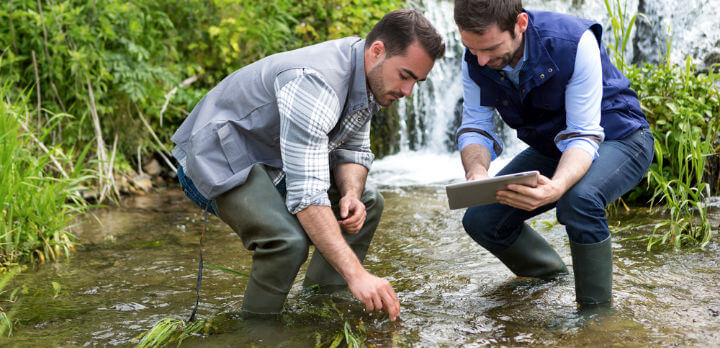What Are Biological Water Quality Parameters?
Written by AOS Treatment Solutions on February 15, 2018

The biological content of water is measured to monitor the presence of pathogens and microbiological organisms in a municipal water supply. Harmful pathogens can enter the water supply via untreated sewage or naturally from rivers and lakes.
Why Municipalities and Businesses Need to Care About Biological Indicators of Water Quality
Monitoring these water quality factors is vital in municipal areas and for businesses having an impact on the rivers and lakes. Waterborne microorganisms and pathogens can cause disease, and a leak of organisms into the water supply from any business or treatment plant can lead to environmental damage, health problems, and litigation.
Municipalities and businesses need to ensure their mechanisms are safe, maintain their biological characteristics of water to an industry standard, and avoid harm. Chemicals can leak into the water supply over time and cause a build-up of bacteria. Businesses also need to ensure they have standard operating procedures in place which include calling in experts to conduct a lab analysis of water quality parameters and treat the water supply when necessary.
Things That Affect Water Quality
There are several important water quality factors to monitor. You might think you have things under control with good systems in place, but all it takes is one breach and you can end up with a major problem on your hands.
One of the biggest issues that affect water quality is adverse weather, such as a storm when rivers and streams flood, levees breach, and pathogens get into the municipal supply. Other problems that affect biological characteristics of water occur when corrosive pipes in a water system allow leakage of chemicals into the supply. These include cadmium, lead, and copper. A crumbling infrastructure, such as a disused factory, can lead to leakages of harmful chemicals. Iron and manganese are common in the southern USA and when they get into the water supply can lead to the formation of bacteria.
Some disinfection systems, particularly those using chloramines, can lead to biofilm forming. If this is left unmonitored, for example by not watching the water quality parameters, bacteria and other pathogens can form, causing potential harmful effects. Water with an odor or taste problem could be the first sign that you might have an issue with the municipal supply.
Next Steps to Improving Water Quality
If you plan to improve and maintain high biological indicators of water quality, there are a few simple steps to take. The first is to call in wastewater treatment consultants who can do a risk assessment with you, pointing out areas where you need to pay attention and monitor the water quality parameters. This could include proximity to agricultural industries or a crumbling factory with disintegrating pipework.
A properly documented risk assessment will enable you to have an action plan to monitor the water quality standards and pick up on any change in levels promptly.
Contact AOS today, and our water treatment experts can advise on the correct way to remedy a water quality problem.
That means you’ll be able to assure the public that you have mechanisms in place to ensure the water quality is maintained safely and correctly. This minimizes the damage to health and the environment and helps to protect your business from litigation should a problem occur from unmonitored biological indicators of water quality.

